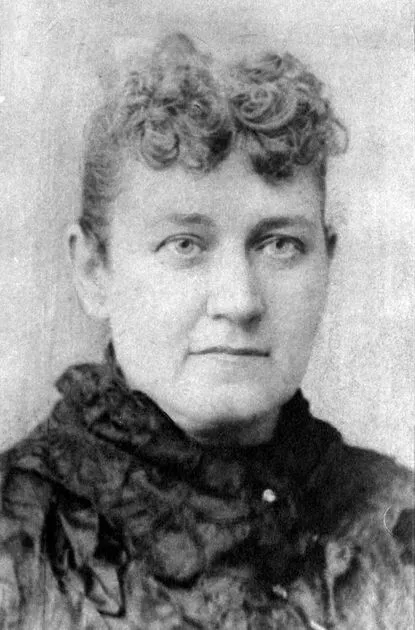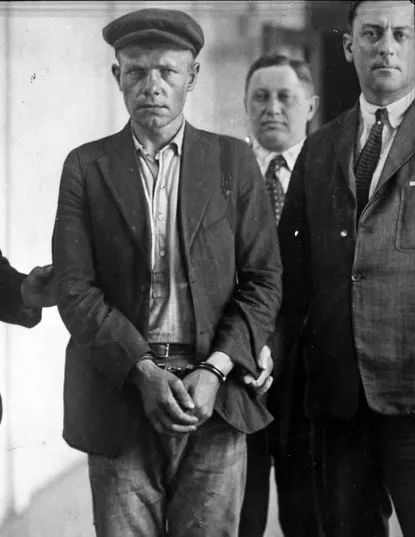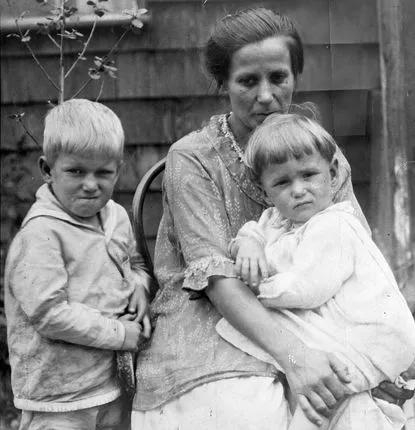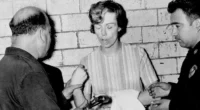In 1921, the death of a wealthy widow caused a stir in the public opinion of the town of West Hempstead, Long Island (USA). After several days of investigation without results, the police finally obtained a clue from an unexpected source. It was the wife of the perpetrator.
The Suspicious Guest

In West Hempstead (Long Island, USA), there was a mansion once considered a symbol of the town. It was an elegant house with 15 Victorian-style rooms, three chimneys, a large dome roof, and vibrant gardens.
It was owned by George W. Bartlett, a wealthy businessman in the oil industry. However, five years prior, George had passed away. Since then, the mansion was often in a state of “closed doors,” with few people coming and going. Gradually, it fell into disrepair, and its former luxury was no longer apparent. The land of over 40,000 square meters was overgrown with weeds, unkempt grass patches, and wilted rose bushes.
It was no surprise when in 1921, the widow Minnie Bartlett (50 years old) decided to put the house up for sale, despite its sentimental value to her.
Around 12:30 on June 22nd, Minnie called her sister, Robert Seabury, and said that she had just had an exchange with a potential homebuyer. However, Minnie emphasized that she found this man to have a “rough appearance” and felt somewhat uneasy about him.
Minnie mentioned that the man was dressed shabbily and had a scruffy beard. He introduced himself as Nicholas Steffens, the owner of a hardware store in Garden City. After touring the house, Nicholas haggled with the homeowner and offered $22,000, while Minnie was asking for $45,000. Eventually, the stranger left but said he would discuss it with his wife and they would return later. Feeling uneasy about dealing alone with this man, Minnie asked her sister to come and support her.
The Body on the Floor
As soon as Robert Seabury ended the call, she immediately, along with a relative, set out and arrived at her sister’s house around 2:00 PM. The mansion was eerily quiet, unsettling Robert Seabury.
After searching around for her sister with no success, Robert Seabury and the relative opened the back window. Here, they were horrified to witness the scene unfolding before them. On the dining room floor, Minnie lay dead with multiple wounds on her face. The police arrived at the scene immediately after receiving the report.
Initially, the police thought these were gunshot wounds, but later determined they were inflicted by a sharp and pointed instrument, possibly a farm tool.
The bedrooms on the second floor were ransacked, suggesting a motive of robbery. But the police were puzzled when they found hundreds of dollars in an envelope on the dressing table and a jewelry box filled with pearls, diamonds, gold necklaces, and bracelets untouched.
The police then searched for clues from the neighboring houses but found nothing unusual. After Mrs. Seabury recounted the earlier phone call with her sister, the police searched for the hardware store in Garden City or someone by the name of Nicholas Steffins but to no avail. The perpetrator had used a false name when speaking to the victim.
The death of the wealthy widow shook the entire town of West Hempstead.
Surprising Information

The death of the wealthy widow Minnie Bartlett sent shockwaves throughout the town of West Hempstead (Long Island, USA). Over 100 volunteers searched every nook and cranny, including dense areas of foliage surrounding the house. Police dogs and helicopters were also deployed in the search for the suspect. Authorities offered a reward of $1,000 for any leads. However, even this enticing reward failed to yield any promising names.
Several days later, the police received information from an unexpected source. It was a woman named Bertha Kubal. She claimed that she suspected her husband, 36-year-old Lawrence Kubal, a Polish farm laborer, to be the perpetrator.
Bertha stated that on the day of the murder, her husband had gone job hunting around town. When Lawrence returned, she noticed he had shaved off his mustache. Throughout the following day, Lawrence hid under the bed. After much questioning, Bertha’s husband confessed that he was afraid to go outside because he had killed a woman but refused to disclose who.
Upon seeing the news in the paper about the wealthy widow’s death, Bertha believed her husband to be the culprit. Due to Bertha’s modest English, she couldn’t convey her story fully, so she asked her brother-in-law to translate for the police.
Externally, Bertha appeared much older than her 30 years. At that time, Bertha was pregnant with her third child. Her first two children were from a previous marriage.
Lawrence was her second husband. Living together, Bertha quickly realized her husband was a thug, violent and abusive. Not only did she have to handle everything in the family herself, but she also feared that one day he would harm her and her children.

Death Sentence for the Murderer
Upon receiving the report, investigators immediately interrogated Lawrence. And it only took about 1 hour to obtain a confession from this man.
Lawrence stated that on that day, he happened to pass by the house of the victim, Minnie Bartlett, and saw some boys stealing cherries. When he asked them if they were not afraid of being caught, they replied that the homeowner was an old wealthy widow living alone.
Seeing the house with a “for sale” sign, Lawrence pretended to be a potential buyer and persuaded Mrs. Minnie to let him in. He then left and said he would return with his wife.
Later, Lawrence returned alone and demanded that the homeowner give him $500. When she refused and angrily pushed him out the door, he blocked her. The homeowner then shouted loudly. That’s when Lawrence decided to kill her.
“I had a chisel in my pocket and used it to hit her,” he confessed.
After killing the victim, Lawrence covered Minnie’s body with rugs and took a bracelet, a watch, and about $5 in cash. The total value of the loot was less than $20.
At the July 1921 trial, the jury took only 11 minutes to convict Lawrence of First-Degree Murder with a death sentence in the electric chair.
The authorities awarded Bertha $900, and her brother-in-law, the interpreter, received the remaining amount. “I will buy bread for my two children and clothes for the baby on the way,” Bertha said.
Lawrence remained calm in prison until he learned that his wife had provided information to the police. Faced with his wife’s betrayal, Lawrence seemed to lose his mind. He attempted suicide twice with a makeshift noose made from bed sheets but failed.
As the execution date approached, Bertha pleaded with the governor to spare her husband’s life, but her efforts were in vain. On March 23, 1922, Lawrence was executed in the electric chair.









